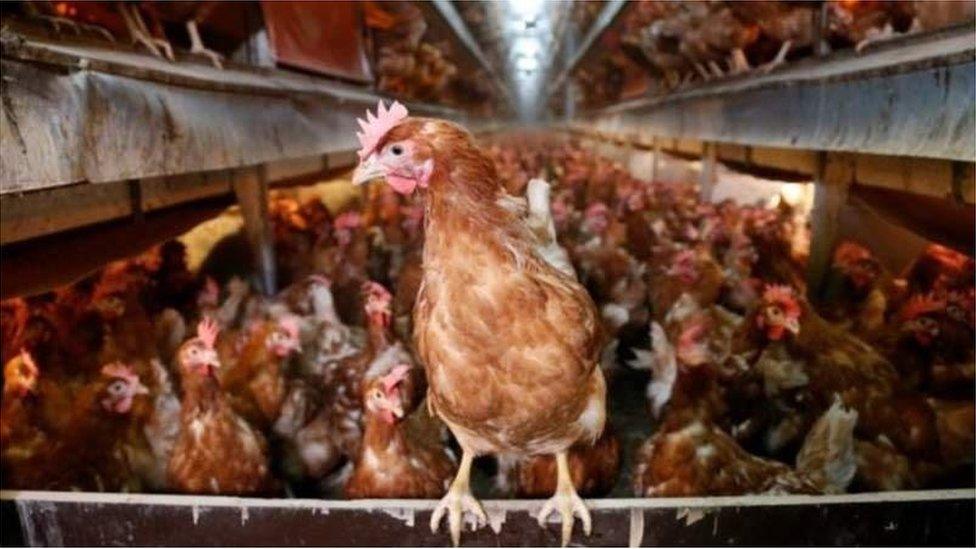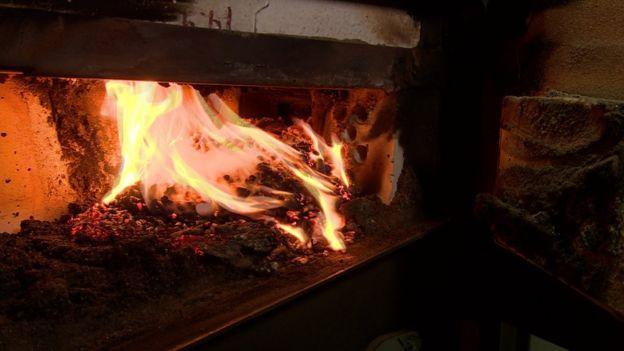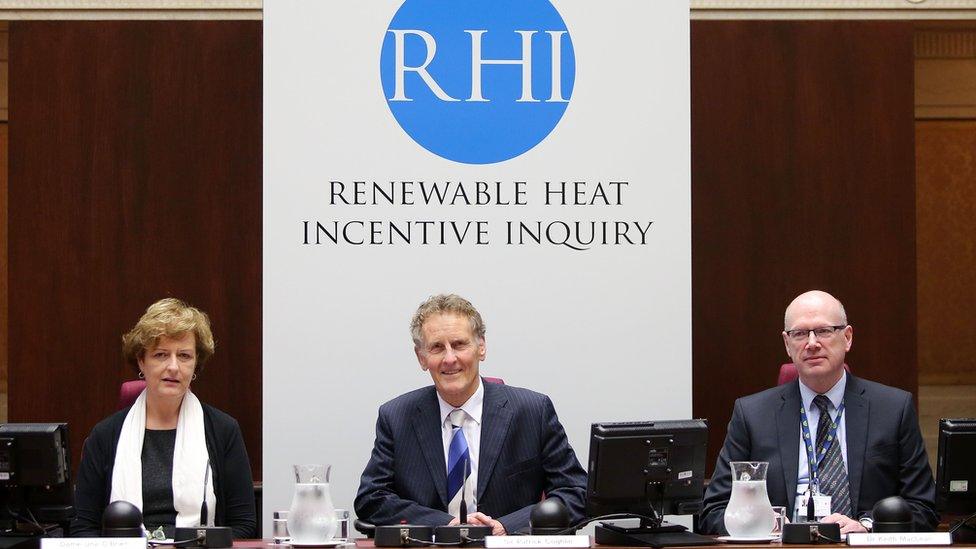Renewable Heat Incentive: Third less heat generated after controls
- Published

The flawed green energy scheme is the subject of an ongoing public inquiry
RHI boilers have generated a third less heat since cost controls were introduced a year ago, according to government auditors.
Firms which installed them have seen their subsidy payments cut in half compared to what they were.
A substantial cut in tariff rates appears to be the reason behind the change in usage.
It brought the Renewable Heat Incentive (RHI) overspend bill down to £2m in 2017/18 from £27m the previous year.
But auditors still have concerns about ongoing abuse of the 20-year scheme and the ability of officials to root it out.
The biggest reduction is among agriculture businesses - the bulk of them poultry - which account for 1,114 boilers.

Heat being generated in the agriculture sector is down by a third
They have seen average payments more than halved from £26,758 in 2016-17 to £12,922 in 2017-18, when the cost controls took effect.
In that sector, heat being generated is down by a third.
There have been significant reductions too in businesses which were formerly drying wood.
Heat usage there is down by more than a half.
'No incentive'
The figures are in a Northern Ireland Audit Office report on the Department for the Economy's accounts.
The department runs the flawed green energy scheme, which is the subject of an ongoing public inquiry.
It introduced tariff changes in 2017 which are the subject of a legal challenge by boiler owners.

The RHI inquiry was set up to investigate the circumstances surrounding the scheme after its costs spiralled
The cost-cutting measures included the introduction of a much less generous tiered-tariff and a cap on the number of hours eligible for subsidy.
The cap was fixed at 400,000kwh - equivalent to a 99kw boiler running 11 hours a day, 365 days a year.
Prior to the cap, 659 RHI boilers ran for longer than this. Since its introduction, that number has fallen to 118.
The Audit Office report says it is clear that scheme applicants' behaviour has "changed significantly".
"This may have been because applicants were no longer able to avail of the higher subsidy rate and, as a result, there was no longer any incentive to generate heat if this was only being done in order to claim additional subsidies."

There was public concern about the scheme's huge projected overspend
Auditors suggested it was unlikely users were running their boilers to the cap and then switching to other forms of heat because wood pellet fuel is currently cheaper than oil and gas.
They also reviewed inspection and compliance rates in the scheme.
The department commissioned a pilot to look at 65 installations on 33 sites.
It found issues ranging from excessive heat generation and incorrect installation of heat meters to poor record keeping.
No installation was deemed to be good, four were satisfactory, 17 were weak and 10 unsatisfactory, with two outstanding.
'Irregular'
In addition, the scheme administrator Ofgem carried out checks on 30 installations, where the picture was much the same.
Auditors said it was clear "problems exist in a significant number of installations".
It said it was concerned at the slow rate of progress of inspection.
Three installations have been kicked out of the scheme as a result of the inspection process and more may follow.
Auditors said they were again qualifying the department's accounts because the inspection process had identified continued problems.
They said a failure to secure Department of Finance approval for the continuation of the scheme between April and November 2015 meant 788 boilers accredited during the period were in receipt of ongoing payments, which it considered irregular spending.
- Published19 April 2018

- Published7 November 2017
